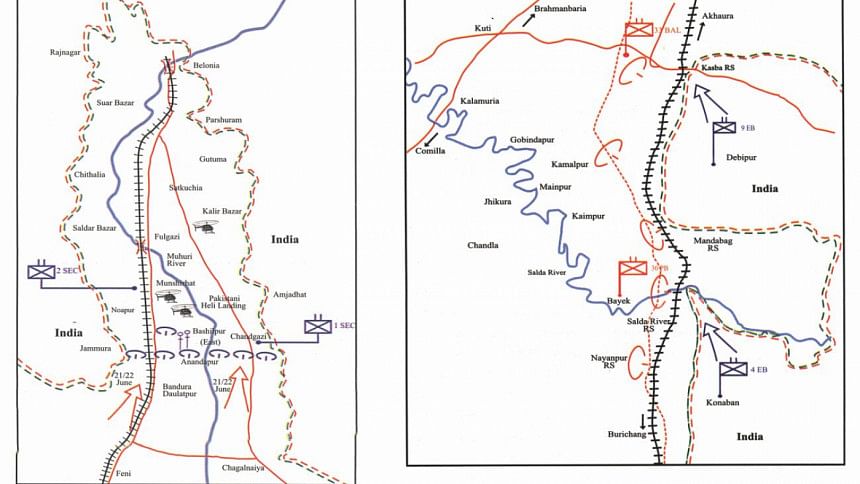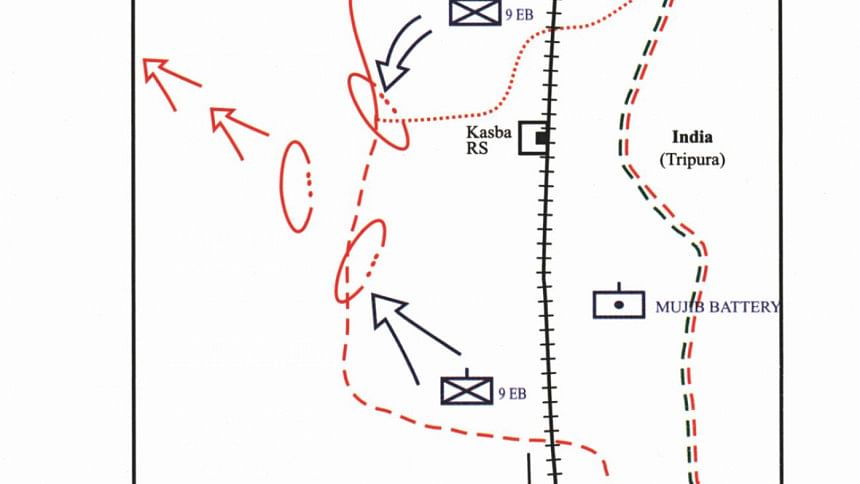1971: Resistance, Resilience and Redemption

1971: Resistance, Resilience and Redemption by Major General Md Sarwar Hossain, BSP, SGP, ndc, ldmc, psc, PhD is another addition to the existing literature on the most glorious phase of our history—the Liberation War. It is the outcome of a research work by a serving soldier. But to say that it is just another book on the nine-months of our fight against the rapacious, marauding Pakistan Army, would not really do full justice to the book. It is more than just a collection of narratives on military engagements following the commencement of genocide on March 25, 1971.
But the book is unique in several other ways too. It is written by a member of the pre-1971 generation who was perhaps old enough to know that something wrong was happening in his country but not quite mature enough to know why. His impulse to not only write a book, but write it after thorough research, grew from the lack of substantive empirical work on the war, of which he became aware only after he joined the army and while he was a young officer delving on the country's past.
The degree of personal detachment to the events preceding 1971 and immediately following the country's independence, his being of the post-1971 generation military officer, has helped him to lend a great deal of objectivity to his analyses of the events on the battlefield and everything associated with the conduct of the war. Most of the books written by Bangladeshi writers on the war itself are well written personal accounts of the war, laced with sentimentality of course, which is only natural. 1971 was about passion and sentiments, and narratives of the participants cannot be separated from that. But this book, in many ways, is in contrast to most of those written on the nine-month war.
An important aspect of the book which readers would find interesting is that the Mukti Bahini battles from the very seminal stages of the war predominate the discussions. In fact this is about the Mukti Bahini. And that makes it unique too, since this is a feature that is absent due to a lack of projection in the narrations of the war that one comes across. The author also very succinctly brings out the role of the political leadership in the higher direction of war and the military leadership's conduct of war. The success in the military front owes much to their astute statesmanship under the most trying of conditions—a lesson, of dovetailing the higher direction of war with the conducting of it i.e. the interplay of the political and strategic directions, never loses relevance in the conduct of statecraft.
In most books on the nine-month war, particularly by Indian authors, descriptions of battles, analyses of the combats, the strategy, and tactics of the 23-day period, between November 21 and December 16, 1971, predominate the narrative. In fact, there are many new facts in this book about the guerrilla forces, and about the many indigenous groups that operated locally, organised by local leaders. They kept the Pakistanis constantly on their toes. Most of these groups would have remained unknown were it not for the fairly detailed account by the author of their audacious and timely actions.

The author records minutely not only the exploits of what was at best an agglomeration of Bengali officers and men stationed in Bangladesh who were later joined by volunteers of all ages, but also informs us about the exploits of Kaderia Bahini and enriches our knowledge about the daring deeds and contributions of other indigenous groups or irregular forces. Many of us were so far unaware of at least eight of these. The description of the actions of the Bengali units stationed in Bangladesh is detailed and exposes the remarkable mental celerity and resilience of the very brave officers and men of these units displayed immediately following the start of “Operation Searchlight” that helped them to avoid complete destruction by the Pakistani forces.
The action of these groups operating from the soil of Bangladesh, and the Mukti Bahini, composed of the Niomito (Regular) and Gano Bahini, against the occupation force, had helped to create the necessary conditions that facilitated the culmination phase of the war to be wrapped up more quickly, and perhaps with less casualties than might have been suffered by the joint forces, due to the attrition caused on them by the guerrilla groups and Mukti Bahini. The initial phase, which started with entirely a defensive posture to fend off the initial Pakistani onslaught, graduated to pin-prick attacks and finally to large-scale actions on enemy logistic establishments, lines of communication, BOPs and defensive positions, some of which lasted till the enemy's surrender finally on December 16.The effect of these operations were very evident, reflected in the state of the enemy's morale. In spite of adequate stock of all accoutrements of war, the Pakistani resistance crumpled in a matter of 21 days. But this does not detract the contribution of the brilliant strategic and tactical plans of the joint forces that involved by-pass and encirclement tactics, leaving the main Pakistani positions not only completely turned but isolated too. This was done to circumvent the main enemy positions and speed up the momentum towards the main objective—Dhaka.
The book contains ten chapters starting with a background and ending with a brilliant analysis of the lessons learnt, including a crisp description of the role of the media. The book starts, in Chapters 1 and 2, by contextualising the historical events that led to March 1971 and the geopolitical and geographical advantages of Bangladesh, and the Pakistani military deployment at the very initial stages. That Yahyadid not wish to deliver on his promise to hand over power to the majority party leader Mujib, but was rooting for a military action on the misplaced notion that force would cow down and suppress the Bengali political, socio-cultural and economic aspirationsis evident in the eventual strength of troops that the Pakistanis built up on our soil. While prior to March 1971 there was only one infantry division with four infantry brigades in Dhaka, Jessore, Comilla and Rangpur, by the time the Pakistani genocide started on March 25, the Pakistanis had increased the size of their force by three times that.
Chapter 3 narrates the initial resistance phase in the different regions the author splits the country into for ease of narration. The book develops in a very chronological manner with the growth of the Bangladesh Forces, the operational division of the country into sectors including that of the Navy and Air Force, in Chapters 4 and 5.Chapter 6 is devoted to the irregular and other indigenous forces.

The following chapter, Chapter 7, discusses the various aspects of conventional and unconventional warfare and how they were practically applied in our context. Herein he draws reference of wars of national liberation in other countries and explains why a particular strategy was adopted at different phases in the nine-month war in Bangladesh. And this has been very brilliantly done. There was a good deal of debate and indeed differences of opinion among our military leadership on the strategy to adopt. Eventually the one adopted, unconventional war till enough strength could be mastered to go for open confrontation, was the most judicious. And this is what history teaches us as being the most prudent. The most recent is the fate that the LTTE suffered because they chose to opt for open hostility without ensuring adequate, if not equal, ratio in combat capability with their adversary, as well as external support. The latter, because of the international developments, had considerably waned. And the author illustrates his points by describing several operations carried out by our forces during this phase.
Chapter 8 recounts the effectiveness of Bangladesh Forces in achieving the final victory while Chapter 9 has been devoted to Pakistani deployment and the offensive of the Allied Forces in the four regions, namely Southwester, Northwestern, Eastern and Central Regions.
Chapter 10 is more than a conclusion since great value has been added to the entire book by discussing the lessons learnt, both political and operational.
Regrettably, much of the military leadership that led the forces in the nine-month long war, and planned and conducted our military campaigns, got little opportunity to record their experiences. At the very seminal phase of the post-independent period, they were taken up with not only giving shape to a force that had emerged from a traumatic experience and transform it into a conventional military, but they were also busy in many nation building work that a newly independent country gets engaged in. They were remarkably successful in that. But unfortunately many of them were taken away from us prematurely, in the tragic events between 1975 and 1991. It is a pity that they could not share with us their wealth of information, and we have been left only the poorer. This book I believe will become an important part of the existing literature on our military history and fill some of the voids that existed heretofore in many aspects regarding our nine-month war.
The writer is Associate Editor, The Daily Star.





Comments